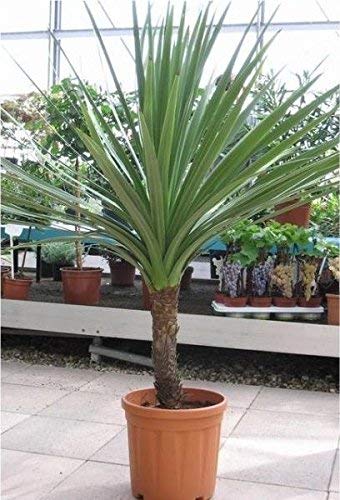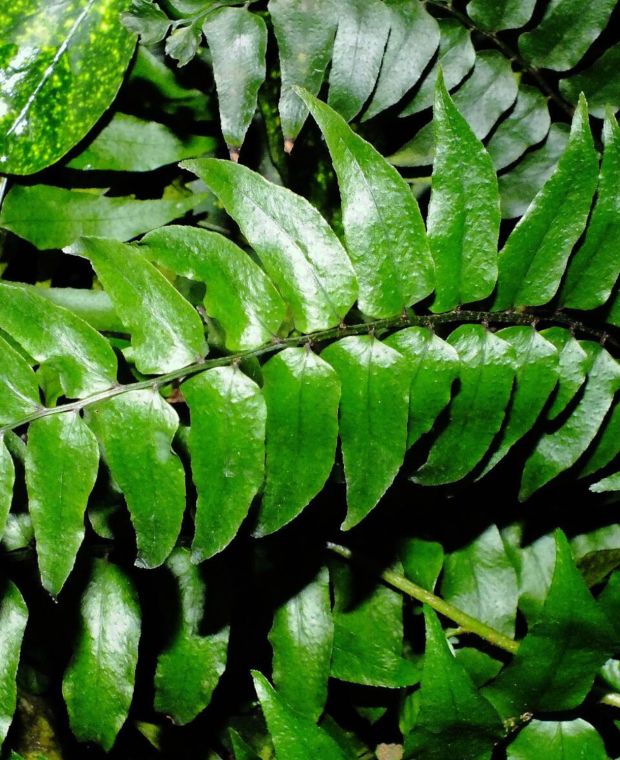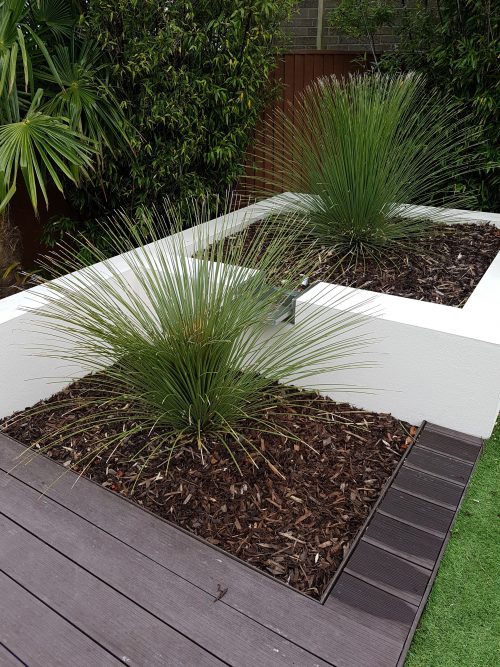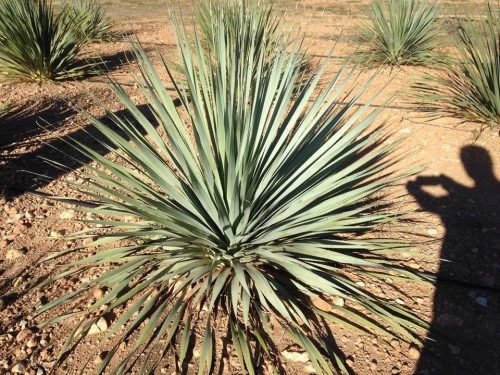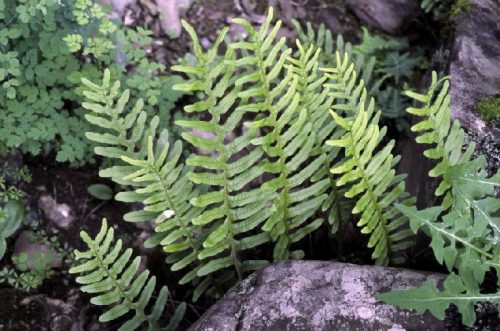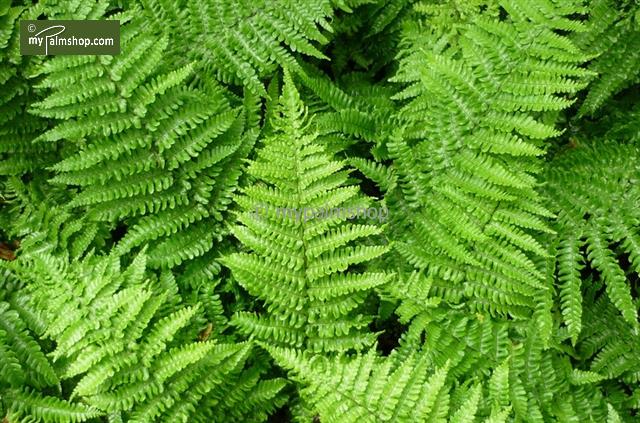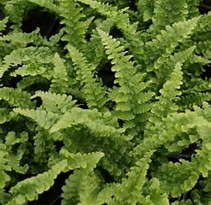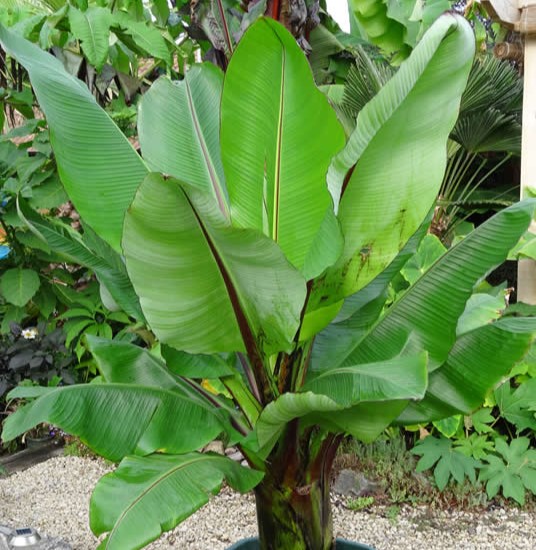-
 In the wild Cycas revoluta is restricted to a few of the islands of the Japanese archipelago but, worldwide, it is the most commonly cultivated cycad. This is due to its ease of culture and ability to withstand a wide range of conditions. In appearance it is the archetypical cycad forming, in time, a tall rough trunk and with crown of glossy deep green leaves at the top and often surrounded by offsets. Indoors it is best grown in a bright position or conservatory. The Sago Palm is also one of the few cycads worth trying outdoors in a milder garden,
In the wild Cycas revoluta is restricted to a few of the islands of the Japanese archipelago but, worldwide, it is the most commonly cultivated cycad. This is due to its ease of culture and ability to withstand a wide range of conditions. In appearance it is the archetypical cycad forming, in time, a tall rough trunk and with crown of glossy deep green leaves at the top and often surrounded by offsets. Indoors it is best grown in a bright position or conservatory. The Sago Palm is also one of the few cycads worth trying outdoors in a milder garden, -
 Can also be referred to as Nolina longifolia, it is a trunk-forming species which with age becomes multi-stemmed, with each trunk reaching up to 3m in height which is topped off with a head of strap-like foliage. Plant in full sun/part shady, frost hardy, keep on dry side, tolerates to -6°C or lower
Can also be referred to as Nolina longifolia, it is a trunk-forming species which with age becomes multi-stemmed, with each trunk reaching up to 3m in height which is topped off with a head of strap-like foliage. Plant in full sun/part shady, frost hardy, keep on dry side, tolerates to -6°C or lower -

 Dasylirion quadrangulatum is the correct name for a plant long known as Dasylirion longissimum. It is a succulent plant related to Yucca and Agave that slowly grows a thick, beautifully scarred trunk from which erupts a tufted head of narrow, rigid, 4-angled green leaves, each with a slightly withered tip, reminiscent of a fibre-optic lamp.
Dasylirion quadrangulatum is the correct name for a plant long known as Dasylirion longissimum. It is a succulent plant related to Yucca and Agave that slowly grows a thick, beautifully scarred trunk from which erupts a tufted head of narrow, rigid, 4-angled green leaves, each with a slightly withered tip, reminiscent of a fibre-optic lamp. -
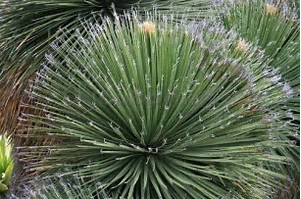 Dasylirion serratifolium is a species of Sotol from southern Mexico. However, in cultivation it is more of a 'catch-all' name for a mixed group of hybrids that have green leaves with toothed margins and terminal tufts. For all practical purposes this is unimportant to anyone other than a dasylirion specialist - in the garden they make a stunning focal point for the arid border along with Yucca, Nolina, Agave and Chamaerops with their fine-leafed 'fibre-optic lamp' appearance that contrasts well with other spiky plants. Alternatively their shape is perfect for pot culture, when they can be taken under glass for winter.
Dasylirion serratifolium is a species of Sotol from southern Mexico. However, in cultivation it is more of a 'catch-all' name for a mixed group of hybrids that have green leaves with toothed margins and terminal tufts. For all practical purposes this is unimportant to anyone other than a dasylirion specialist - in the garden they make a stunning focal point for the arid border along with Yucca, Nolina, Agave and Chamaerops with their fine-leafed 'fibre-optic lamp' appearance that contrasts well with other spiky plants. Alternatively their shape is perfect for pot culture, when they can be taken under glass for winter. -
Out of stock
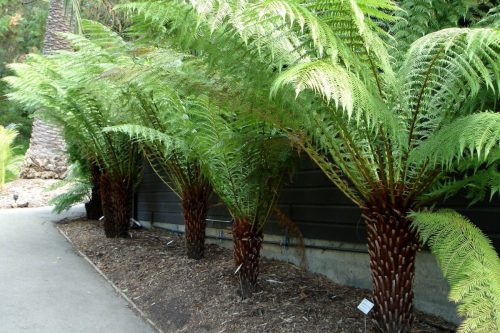 Tree Ferns This is one of the best known and one of the hardiest tree fern from Australia. This is a pride of every garden – large, bold, ancient and beautiful. If possible avoid windy sites and protect crown in winter.
Tree Ferns This is one of the best known and one of the hardiest tree fern from Australia. This is a pride of every garden – large, bold, ancient and beautiful. If possible avoid windy sites and protect crown in winter. -
 An architectural feature plant, gives dramatic effect. Exotic foliage and is fast growing. It has stunning large, velvety feaves, suited to fertile soil and place in full sun. Can grow up to 2 to 3 m. Feed regularly. Can be overwintered outdoors but protect the roots with mulch and wrap crown, best to bring indoors and store in large pot. Prices vary as per size of banana
An architectural feature plant, gives dramatic effect. Exotic foliage and is fast growing. It has stunning large, velvety feaves, suited to fertile soil and place in full sun. Can grow up to 2 to 3 m. Feed regularly. Can be overwintered outdoors but protect the roots with mulch and wrap crown, best to bring indoors and store in large pot. Prices vary as per size of banana -
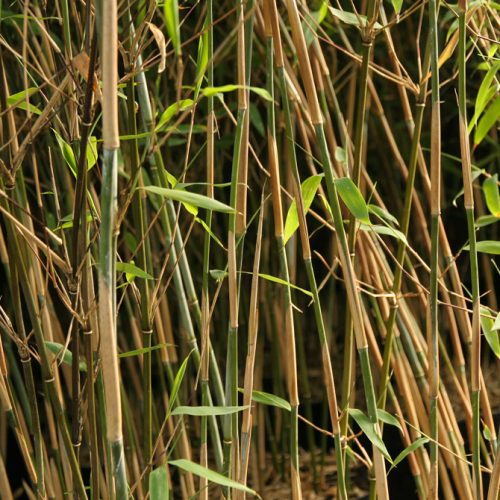 A new generation of non-invasive bamboo with an extraordinary vitality. Clumping variety and grows up to 3.5 metre In the twenty century Fargesia nitida and murieliae were the only two Fargesias varieties available in this country. They were perfect for small gardens, giving the touch of the oriental ambiance, clump forming, evergreen and non-invasive, suitable to be planted as a hedge, in large pots or as a specimen planted out. Bamboo itself has a hidden nick name called ‘Century‘ plant as it due to flower once in a century, a building DNA stimulates other bamboo of same genre to flower around the world at the same period, after years of seed production most mother plant will die. In the nineteen nineties both types of Fargesia entered their flowering period at the same time this produced over the years an abundance and high excess of seedlings in their native China. To replenish the dying stock of Fargesia, collectors, Nursery men and Botanist flooded to China collecting seedlings by the thousands. Over the years the Fargesia off spring showed a high number of variation with lots of inferior inbred plants. Twenty years on, Dutch plant breeders where able to produce artificial crosses between Fargesia and different clones of nitida to produce some extremely beautiful hybrids.
A new generation of non-invasive bamboo with an extraordinary vitality. Clumping variety and grows up to 3.5 metre In the twenty century Fargesia nitida and murieliae were the only two Fargesias varieties available in this country. They were perfect for small gardens, giving the touch of the oriental ambiance, clump forming, evergreen and non-invasive, suitable to be planted as a hedge, in large pots or as a specimen planted out. Bamboo itself has a hidden nick name called ‘Century‘ plant as it due to flower once in a century, a building DNA stimulates other bamboo of same genre to flower around the world at the same period, after years of seed production most mother plant will die. In the nineteen nineties both types of Fargesia entered their flowering period at the same time this produced over the years an abundance and high excess of seedlings in their native China. To replenish the dying stock of Fargesia, collectors, Nursery men and Botanist flooded to China collecting seedlings by the thousands. Over the years the Fargesia off spring showed a high number of variation with lots of inferior inbred plants. Twenty years on, Dutch plant breeders where able to produce artificial crosses between Fargesia and different clones of nitida to produce some extremely beautiful hybrids. -
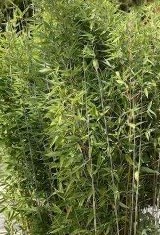 This bamboo is vigorous upright columnar habit, expected final height 3.5 metres. This ornamental bamboo is defined by its large light coloured bracts, which will remain visible throughout the year, the leaf colour is bright green. The growth narrows at the base and are closely spaced. Very suitable for planting in a sunny spot as solitary or as an everygreen hedge. Bamboo Information: In the twenty century Fargesia nitida and murieliae were the only two Fargesias varieties available in this country. They were perfect for small gardens, giving the touch of the oriental ambiance, clump forming, evergreen and non-invasive, suitable to be planted as a hedge, in large pots or as a specimen planted out. Bamboo itself has a hidden nick name called ‘Century‘ plant as it due to flower once in a century, a building DNA stimulates other bamboo of same genre to flower around the world at the same period, after years of seed production most mother plant will die. In the nineteen nineties both types of Fargesia entered their flowering period at the same time this produced over the years an abundance and high excess of seedlings in their native China. To replenish the dying stock of Fargesia, collectors, Nursery men and Botanist flooded to China collecting seedlings by the thousands. Over the years the Fargesia off spring showed a high number of variation with lots of inferior inbred plants. Twenty years on, Dutch plant breeders where able to produce artificial crosses between Fargesia and different clones of nitida to produce some extremely beautiful hybrids.
This bamboo is vigorous upright columnar habit, expected final height 3.5 metres. This ornamental bamboo is defined by its large light coloured bracts, which will remain visible throughout the year, the leaf colour is bright green. The growth narrows at the base and are closely spaced. Very suitable for planting in a sunny spot as solitary or as an everygreen hedge. Bamboo Information: In the twenty century Fargesia nitida and murieliae were the only two Fargesias varieties available in this country. They were perfect for small gardens, giving the touch of the oriental ambiance, clump forming, evergreen and non-invasive, suitable to be planted as a hedge, in large pots or as a specimen planted out. Bamboo itself has a hidden nick name called ‘Century‘ plant as it due to flower once in a century, a building DNA stimulates other bamboo of same genre to flower around the world at the same period, after years of seed production most mother plant will die. In the nineteen nineties both types of Fargesia entered their flowering period at the same time this produced over the years an abundance and high excess of seedlings in their native China. To replenish the dying stock of Fargesia, collectors, Nursery men and Botanist flooded to China collecting seedlings by the thousands. Over the years the Fargesia off spring showed a high number of variation with lots of inferior inbred plants. Twenty years on, Dutch plant breeders where able to produce artificial crosses between Fargesia and different clones of nitida to produce some extremely beautiful hybrids. -
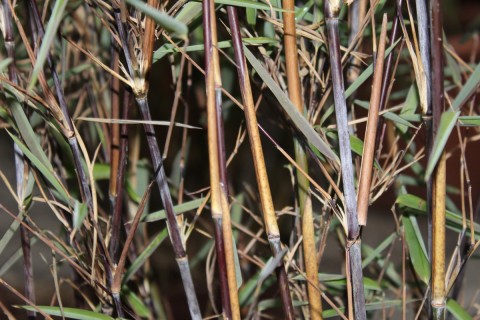 Fargesia nitida 'Volcano' is a bulb shaped bushy bamboo with dense and fine foliage. Evergreen and very hardy, forms a beautiful contrast between the red, almost black canes and green leaves. Tolerates sun or dappled shade. 7.5 litre at £34.50 Bamboo Information In the twenty century Fargesia nitida and murieliae were the only two Fargesias varieties available in this country. They were perfect for small gardens, giving the touch of the oriental ambiance, clump forming, evergreen and non-invasive, suitable to be planted as a hedge, in large pots or as a specimen planted out. Bamboo itself has a hidden nick name called ‘Century‘ plant as it due to flower once in a century, a building DNA stimulates other bamboo of same genre to flower around the world at the same period, after years of seed production most mother plant will die. In the nineteen nineties both types of Fargesia entered their flowering period at the same time this produced over the years an abundance and high excess of seedlings in their native China. To replenish the dying stock of Fargesia, collectors, Nursery men and Botanist flooded to China collecting seedlings by the thousands. Over the years the Fargesia off spring showed a high number of variation with lots of inferior inbred plants. Twenty years on, Dutch plant breeders where able to produce artificial crosses between Fargesia and different clones of nitida to produce some extremely beautiful hybrids.
Fargesia nitida 'Volcano' is a bulb shaped bushy bamboo with dense and fine foliage. Evergreen and very hardy, forms a beautiful contrast between the red, almost black canes and green leaves. Tolerates sun or dappled shade. 7.5 litre at £34.50 Bamboo Information In the twenty century Fargesia nitida and murieliae were the only two Fargesias varieties available in this country. They were perfect for small gardens, giving the touch of the oriental ambiance, clump forming, evergreen and non-invasive, suitable to be planted as a hedge, in large pots or as a specimen planted out. Bamboo itself has a hidden nick name called ‘Century‘ plant as it due to flower once in a century, a building DNA stimulates other bamboo of same genre to flower around the world at the same period, after years of seed production most mother plant will die. In the nineteen nineties both types of Fargesia entered their flowering period at the same time this produced over the years an abundance and high excess of seedlings in their native China. To replenish the dying stock of Fargesia, collectors, Nursery men and Botanist flooded to China collecting seedlings by the thousands. Over the years the Fargesia off spring showed a high number of variation with lots of inferior inbred plants. Twenty years on, Dutch plant breeders where able to produce artificial crosses between Fargesia and different clones of nitida to produce some extremely beautiful hybrids.

